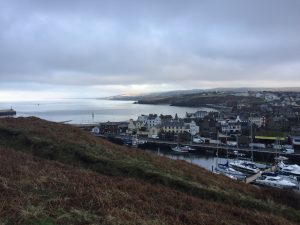 Peel #OscarWalks is the first of Oscar’s posts for 2020 and he’s very excited about it. Since the appearance of the dog trainer at the end of last year, we’ve been working very hard to get Oscar to behave better on the lead so that we can take him to more interesting places. Peel was a bit of an experiment, but on the whole it worked very well, apart from one minor incident involving Vikings which I’ll leave him to explain for himself.
Peel #OscarWalks is the first of Oscar’s posts for 2020 and he’s very excited about it. Since the appearance of the dog trainer at the end of last year, we’ve been working very hard to get Oscar to behave better on the lead so that we can take him to more interesting places. Peel was a bit of an experiment, but on the whole it worked very well, apart from one minor incident involving Vikings which I’ll leave him to explain for himself.
Peel is a seaside town and small fishing port on the west of the Isle of Man and the third largest town on the island after Douglas and Ramsey. It is a charming little town, with the older part of Peel mostly built of reddish sandstone, the narrow streets of the old fishing and merchant community winding down to the quayside. In the early eighteenth century, Peel had a thriving trade with European ports such as Amsterdam, and by the end of the nineteenth century it was a busy fishing port.
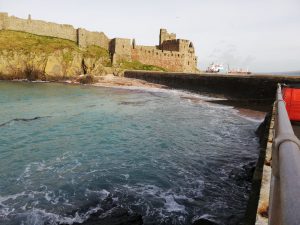 We parked the car at Fenella Beach, at the foot of Peel Hill and the castle and ten minutes was spent walking Oscar up and down the car park to get him to calm down. It didn’t help that it was fairly breezy and the tide was in, with huge waves crashing onto the little beach.
We parked the car at Fenella Beach, at the foot of Peel Hill and the castle and ten minutes was spent walking Oscar up and down the car park to get him to calm down. It didn’t help that it was fairly breezy and the tide was in, with huge waves crashing onto the little beach.
“OMG, it’s so exciting. Mum, can I go on the beach and swim?”
“Not today, Oscar, it’s a bit wild. Look at those waves.”
“Those waves are bigger than me.”
“Exactly.”
“Where are we going, then?”
“We’re going to explore Peel, Oscar. Stop jumping about and we can get going.”
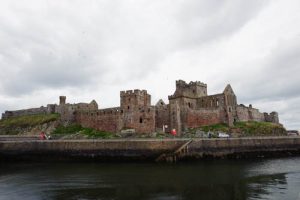 Peel was the capital of the island before 1344 and is still the island’s main fishing port, while St German’s Cathedral is the seat of the Bishop of Sodor and Man. It it still a pretty seaside resort and has a Victorian promenade and sandy beach. From Fenella Beach, we walked towards Peel Castle which overlooks the town from St Patrick’s Isle. The castle was first built in the eleventh century and is now largely ruined, but definitely worth visiting. There are walkways up around the outside of the castle with a lot of steps, a challenge with an excitable young Labrador but well worth it for the views.
Peel was the capital of the island before 1344 and is still the island’s main fishing port, while St German’s Cathedral is the seat of the Bishop of Sodor and Man. It it still a pretty seaside resort and has a Victorian promenade and sandy beach. From Fenella Beach, we walked towards Peel Castle which overlooks the town from St Patrick’s Isle. The castle was first built in the eleventh century and is now largely ruined, but definitely worth visiting. There are walkways up around the outside of the castle with a lot of steps, a challenge with an excitable young Labrador but well worth it for the views.
“Mum, stop pulling on the lead!”
“Oscar, it’s you that’s pulling on the lead, I cannot run this. Settle down.”
“Sorry. It’s great up here, I can see for miles. Are those white dots over there sheep?”
“Yes.”
“I don’t like sheep.”
“They’re miles away, Oscar. Come on, let’s go down and walk into town. And calm down a bit, they’ll be thinking the Moddy Dhoo is on the loose up here.”
“I’ve heard of him. Wasn’t he a demon dog?”
“Yes, he’s supposed to haunt Peel Castle. People used to call Toby the Moddy Dhoo”
“Someone called me that down Summerhill Glen one night.”
“I’m not surprised, you frightened the life out of them in the dark. This way.”
“What’s that water?”
“It’s the River Neb.”
“What are those things with big poles?”
“They’re boats, Oscar, there’s a marina here. And some fishing boats. When we first moved to the island, this area was tidal, but in 2005 they built a new floodgate to keep the river water in, so that the moored boats can float at low tide. This way.”
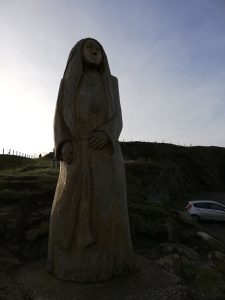 There’s a footbridge over the river, but Oscar and I walked the long way round by the road, skirting the bottom of Peel Hill. The hill was one of my favourite walks with Joey and Toby, but it’s very steep in places and when he was only a little older than Oscar is now, Toby injured himself by taking off after a rabbit and rolling a very long way down the hill, rather like the heroine of An Unwilling Alliance, only with more legs and a tail. I’m going to give it another few months before I take Oscar up there, but we did climb a little way up and sit on one of the benches to admire the view over the town. There’s a lovely woodcarving at the foot of the path, which Toby used to take exception to. Oscar was doubtful, but seemed to accept my word for it that Fenella, the seven foot tall carving, was harmless. After that, following the road round, we arrived on the far side of the river.
There’s a footbridge over the river, but Oscar and I walked the long way round by the road, skirting the bottom of Peel Hill. The hill was one of my favourite walks with Joey and Toby, but it’s very steep in places and when he was only a little older than Oscar is now, Toby injured himself by taking off after a rabbit and rolling a very long way down the hill, rather like the heroine of An Unwilling Alliance, only with more legs and a tail. I’m going to give it another few months before I take Oscar up there, but we did climb a little way up and sit on one of the benches to admire the view over the town. There’s a lovely woodcarving at the foot of the path, which Toby used to take exception to. Oscar was doubtful, but seemed to accept my word for it that Fenella, the seven foot tall carving, was harmless. After that, following the road round, we arrived on the far side of the river.
“What’s that smell?”
“Smell?”
“Smell? That amazing smell. It’s fantastic. It smells of food. Yummy, yummy food cooking. Where is it? Can I have some? I’m hungry. Muuuummmmm!!!”
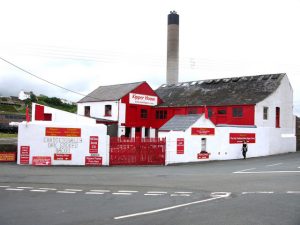
“Calm down, Oscar, it’s just the kipper smokeries. There are a couple of them here, they smoke kippers the traditional way. You can do a tour of Moore’s to see how the smoking is done, but I doubt I could take a Labrador. I have been though, and it’s really interesting. I agree, the smell is amazing, but I can’t take you to buy kippers today. We’ll get some another day though, I think you’d love them.”
“I already love them and I’ve not eaten them yet. What’s that building?”
“That’s the Manx Transportation Museum, it’s in the old brickworks. I’ve never been inside, but I must do so this summer.”
“Can I come?”
“I’ll find out. This way. Heel, remember.”
“Sorry. It’s that smell. What’s that?”
“That’s the back of the House of Mannanan. It’s one of the best museums on the island, it’s partly a new building and partly built in the old Peel railway station. It covers the history of the island right up to the present and contains Odin’s Raven, which is a two-thirds scale replica of a Viking longship which was built in Norway, and sailed to the island to arrive on 4 July 1979 to celebrate the millennium of Tynwald, the legislature of the Isle of Man. Fascinating.”
“Not sure I’d like museums, but I do like this place, it’s by the sea and it’s got great smells, and it’s…Oh My God, what’s that??????”
“Oscar, calm down, it’s all right, it’s not real.”
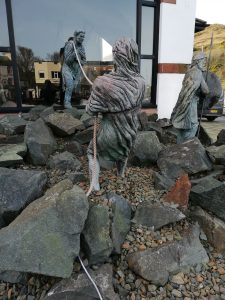 “Whaddd’you mean it’s not real? Of course it’s real, I’m looking right at it, it’s right here on the pavement. They’re terrifying! They’re huge! They’re worse than sheep! How did they get here? Why are they walking through walls? Why is nobody doing anything about them? Well I’m not having this, it’s not safe! I’m going to tell them what for! Woof! Woof woof woof! Woof, woof, woof woof, woof!”
“Whaddd’you mean it’s not real? Of course it’s real, I’m looking right at it, it’s right here on the pavement. They’re terrifying! They’re huge! They’re worse than sheep! How did they get here? Why are they walking through walls? Why is nobody doing anything about them? Well I’m not having this, it’s not safe! I’m going to tell them what for! Woof! Woof woof woof! Woof, woof, woof woof, woof!”
“Oscar, calm down, they’re just statues. It’s a sculpture. They’re Vikings.”
“Woof woof woof! Woof, woof, woof woof, woof!”
“Oscar, sit!”
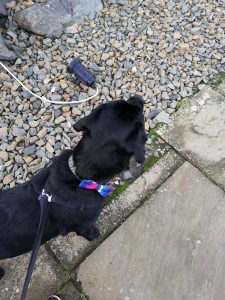 “Woof, woof, woof woof, woof! Woof, woof….OMG what this now? What’s happening to my paws? I’m being attacked from all sides, it’s sharp! Woof, woof, woof woof, woof!”
“Woof, woof, woof woof, woof! Woof, woof….OMG what this now? What’s happening to my paws? I’m being attacked from all sides, it’s sharp! Woof, woof, woof woof, woof!”
“Oscar, heel! Over here, now. Come and sit on this bench, have a drink of water and calm down.”
“Woof!”
“That’s enough. Look at you, you’re shaking. Here, have a drink, there’s a water bowl here. That’s better. Are you all right?”
“Yes.”
 “Okay. Those aren’t real Vikings, they’re statues. The boat itself is inside the museum, and they’ve carried on the Viking theme out here, which is why it looks like they’re coming through the walls. I know they made you jump but they’re no more real than the two statues of the dogs outside that house at the top of our road.”
“Okay. Those aren’t real Vikings, they’re statues. The boat itself is inside the museum, and they’ve carried on the Viking theme out here, which is why it looks like they’re coming through the walls. I know they made you jump but they’re no more real than the two statues of the dogs outside that house at the top of our road.”
“I barked at them too.”
“I know, but you don’t any more, because you know they’re not real.”
“My paws hurt.”
“It’s just a gravel pathway around the display, I think the stones were a bit sharp and you were jumping on them. There, are you calm now?”
“Yes. Sorry.”
“It’s all right. Had enough Vikings?”
“More than enough.”
“Lets walk along the prom. If the sea is calm enough, you can have a paddle.”
Peel Beach was one of my favourites when the children were young. It’s very sandy, with a good kiosk serving food, drinks and ice creams, and it’s just over the road to Davison’s Ice Cream Parlour. Oddly enough, though, it’s not brilliant for building sandcastles, the consistency of the sand isn’t quite right. Still, Oscar doesn’t mind that, and a good splash in the sea soothed his paws and restored his equilibrium.

From there, we walked up through the narrow streets of the town towards St German’s Cathedral. This is no bigger than a large church, but it’s very pretty and has a very welcoming feel to it. Churches vary when it comes to allowing dogs, but I wasn’t going to chance it anyway with Oscar, in case he saw a religious statue that he took a dislike to, it seemed to be a bit of a theme today. Instead, we walked all around the outside, admiring the work that’s been done on the new gardens. A series of seventeen small gardens are being developed within the grounds; twelve will tell the story of the island and how Christianity has affected it and five will have special themes. I’ve been enjoying watching this develop and Oscar seemed to enjoy the peace and quiet after his encounter with Vikings.
“Are you getting tired, Oscar?”
“A bit. It’s been a great day, though.”
“Come on, let’s walk back to the car along the prom.”
“What’s that building, Mum?”
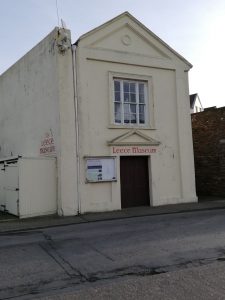 “That’s the Leece Museum. It used to be the old courthouse and gaol and it has exhibitions about the history of Peel, it’s very interesting. One day, I’m going to do a post or two about the island museums, but I’ll have to do that without you, I don’t think they’d cope with you in a museum, and frankly the idea terrifies me.”
“That’s the Leece Museum. It used to be the old courthouse and gaol and it has exhibitions about the history of Peel, it’s very interesting. One day, I’m going to do a post or two about the island museums, but I’ll have to do that without you, I don’t think they’d cope with you in a museum, and frankly the idea terrifies me.”
“I don’t mind. They’re probably all full of Vikings. And Fenellas. And possibly sheep.”
“Here we are, back at the car. Hop in.”
“Might have a sleep on the way back, Mum.”
“Go ahead, Oscar. You’ve been a very good boy. I’ve got work to do when I get back, so you can have a snooze on the sofa.”
“Where are we going next week?”
“I don’t know. Castletown, perhaps. We could get pizza for lunch.”
“Castletown it is then!”
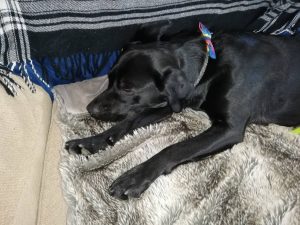
Look out for more #OscarWalks posts to come and if you enjoyed this and want to hear more from Writing with Labradors, why not follow me on Facebook, Twitter, Instagram or Medium?

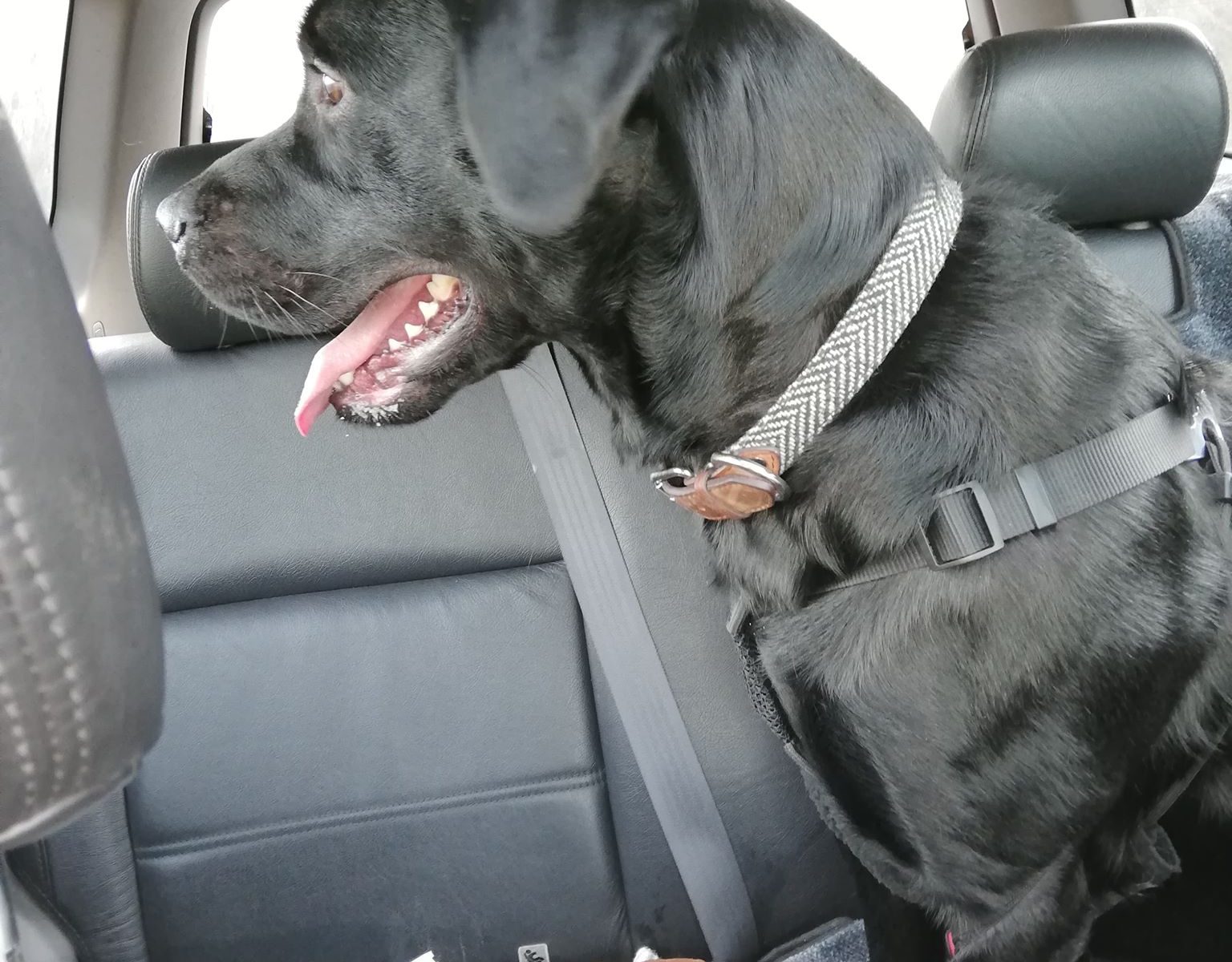
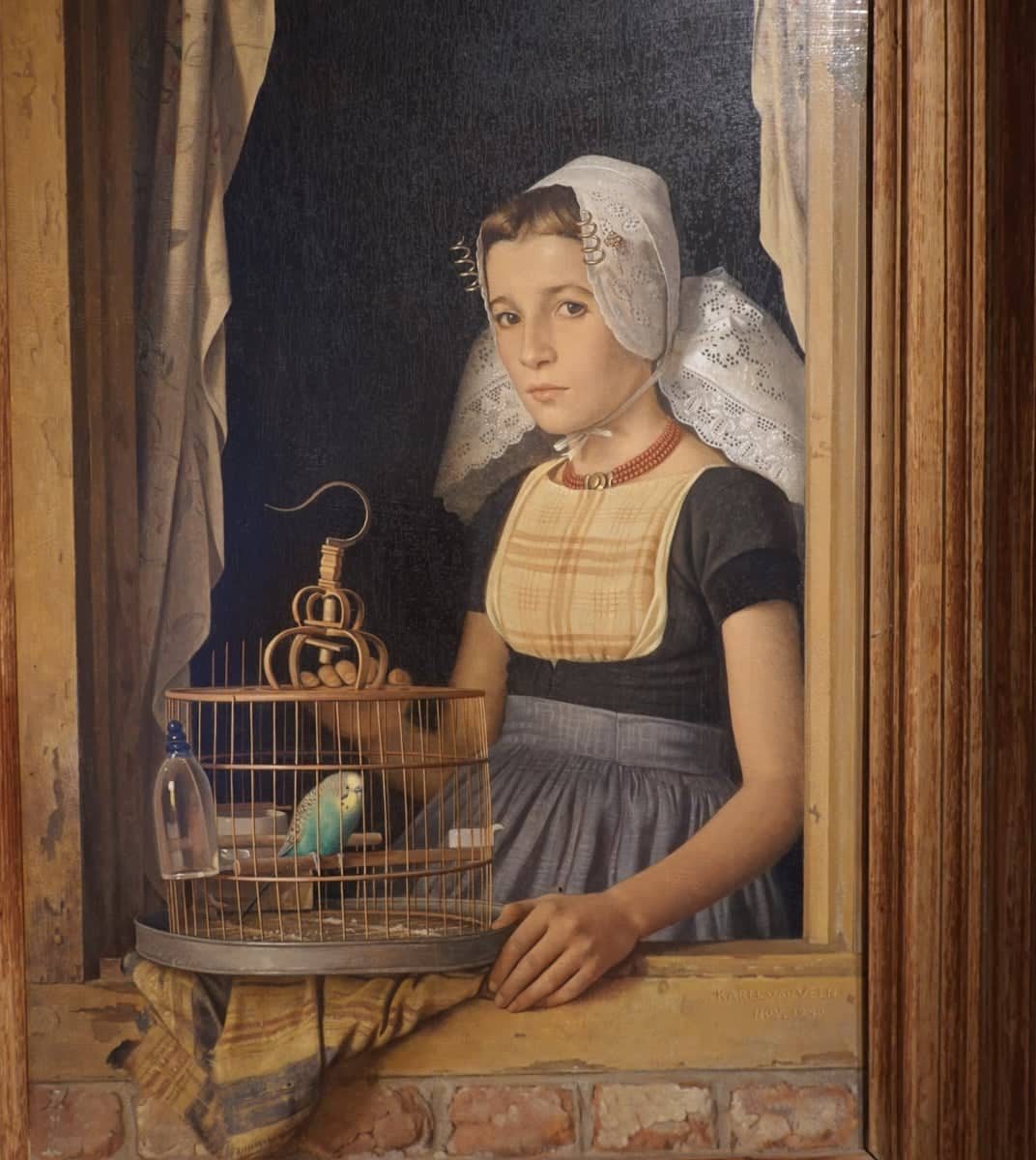
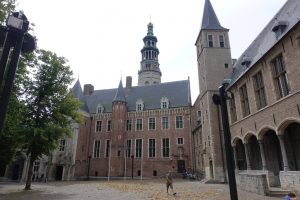 Middelburg Abbey originated in the twelfth century. Monks from Antwerp established a large religious foundation with two churches and extensive lands on Walcheren and in other parts of Zeeland. Many of the surviving buildings from the monastic period are Medieval Gothic, and date from the late sixteenth century.
Middelburg Abbey originated in the twelfth century. Monks from Antwerp established a large religious foundation with two churches and extensive lands on Walcheren and in other parts of Zeeland. Many of the surviving buildings from the monastic period are Medieval Gothic, and date from the late sixteenth century.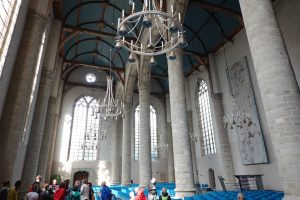 The New church features a double nave and dates from the rebuilding that followed the fire of 1558. It replaced an earlier church built around 1300 which also featured a twin nave. The eastern wall of the New church is also the western wall of the Choir church, and the two interiors were originally connected through an arch, but this was subsequently blocked up. After 1833 the New church became the only parish church for the central walled area of Middelburg.
The New church features a double nave and dates from the rebuilding that followed the fire of 1558. It replaced an earlier church built around 1300 which also featured a twin nave. The eastern wall of the New church is also the western wall of the Choir church, and the two interiors were originally connected through an arch, but this was subsequently blocked up. After 1833 the New church became the only parish church for the central walled area of Middelburg.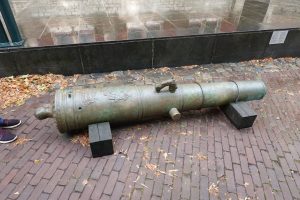 There is a big, open square in the middle of the Abbey buildings, with trees and seats and a couple of cannon which look rather as though they had been carelessly abandoned by some negligent commissary officer. There is also the entrance to the museum and cafe.
There is a big, open square in the middle of the Abbey buildings, with trees and seats and a couple of cannon which look rather as though they had been carelessly abandoned by some negligent commissary officer. There is also the entrance to the museum and cafe.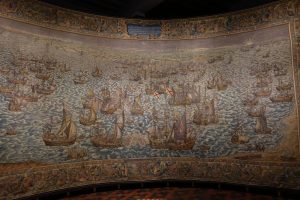 This part of the building has been thoroughly modernised inside, giving little sense of the original abbey. The museum has exhibitions over a number of floors. It is very well designed and put together with very modern themes, but I will be honest and admit that I was a little disappointed. While I wasn’t expecting to find anything about the campaign of 1809 which was not especially significant in Dutch history, apart from the people who died in Vlissingen and Veere, I was very much hoping for some information about the history of Middelburg and Walcheren and that was very much lacking. The one exhibition which dealt with history, was an amazing selection of tapestries telling the story of the rebellion against Spain. I loved that section. Much of the rest of the museum was beautifully put together but gave very little actual information about the town or its history. Given that there is no other museum in Middelburg to do that job, I thought it a shame, although I did pick up some useful information about historic costume.
This part of the building has been thoroughly modernised inside, giving little sense of the original abbey. The museum has exhibitions over a number of floors. It is very well designed and put together with very modern themes, but I will be honest and admit that I was a little disappointed. While I wasn’t expecting to find anything about the campaign of 1809 which was not especially significant in Dutch history, apart from the people who died in Vlissingen and Veere, I was very much hoping for some information about the history of Middelburg and Walcheren and that was very much lacking. The one exhibition which dealt with history, was an amazing selection of tapestries telling the story of the rebellion against Spain. I loved that section. Much of the rest of the museum was beautifully put together but gave very little actual information about the town or its history. Given that there is no other museum in Middelburg to do that job, I thought it a shame, although I did pick up some useful information about historic costume.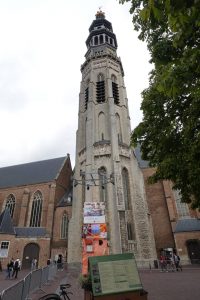 We climbed Lange Jan to see the fabulous views over the town, following in the footsteps of my fictional Lieutenant Durrell who found it a quiet haven away from the chaos of the campaign in 1809. After coffee and cake outside a local cafe, dodging another rain shower, we went back to Veere to the two museums there. The Veere Museums consist of the City Hall and the Scottish Houses on the quay, both fabulous historic buildings.
We climbed Lange Jan to see the fabulous views over the town, following in the footsteps of my fictional Lieutenant Durrell who found it a quiet haven away from the chaos of the campaign in 1809. After coffee and cake outside a local cafe, dodging another rain shower, we went back to Veere to the two museums there. The Veere Museums consist of the City Hall and the Scottish Houses on the quay, both fabulous historic buildings.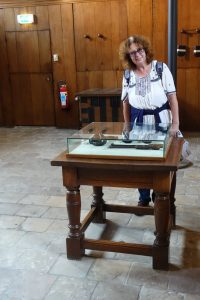 The museums in Veere were far more interesting in terms of history, although I have to say that there was still more art than history in both of them. I really enjoy art, and I loved the story of the English family who set up an artists’ community in Veere before the second world war. I still felt a slight sense of frustration, however. These towns have so much history and I came away knowing very little about the people, the development of the town, their economy and agriculture and what shaped them. Perhaps there’s a museum somewhere else in this area that I’ve not found which offers that.
The museums in Veere were far more interesting in terms of history, although I have to say that there was still more art than history in both of them. I really enjoy art, and I loved the story of the English family who set up an artists’ community in Veere before the second world war. I still felt a slight sense of frustration, however. These towns have so much history and I came away knowing very little about the people, the development of the town, their economy and agriculture and what shaped them. Perhaps there’s a museum somewhere else in this area that I’ve not found which offers that.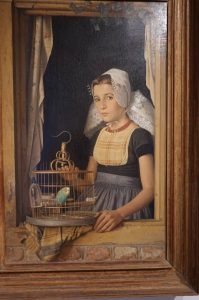 Having said that, I had a fabulous day. The museums were great at what they did, even if it wasn’t what I wanted, and I thoroughly enjoyed myself. I also found, in a rather more modern painting of a woman in traditional Dutch costume, my perfect Katja de Groot. Honestly, I couldn’t stop staring at her. Isn’t she beautiful?
Having said that, I had a fabulous day. The museums were great at what they did, even if it wasn’t what I wanted, and I thoroughly enjoyed myself. I also found, in a rather more modern painting of a woman in traditional Dutch costume, my perfect Katja de Groot. Honestly, I couldn’t stop staring at her. Isn’t she beautiful?
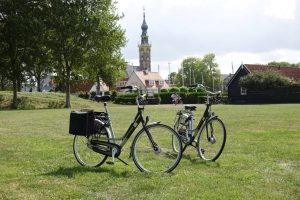 Our Walcheren Expedition, day 2, could be sub-titled “What I learned about cycling.”
Our Walcheren Expedition, day 2, could be sub-titled “What I learned about cycling.”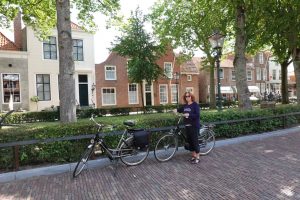
 Perhaps it’s time to venture off the prom and try a few gentle hills at home…
Perhaps it’s time to venture off the prom and try a few gentle hills at home…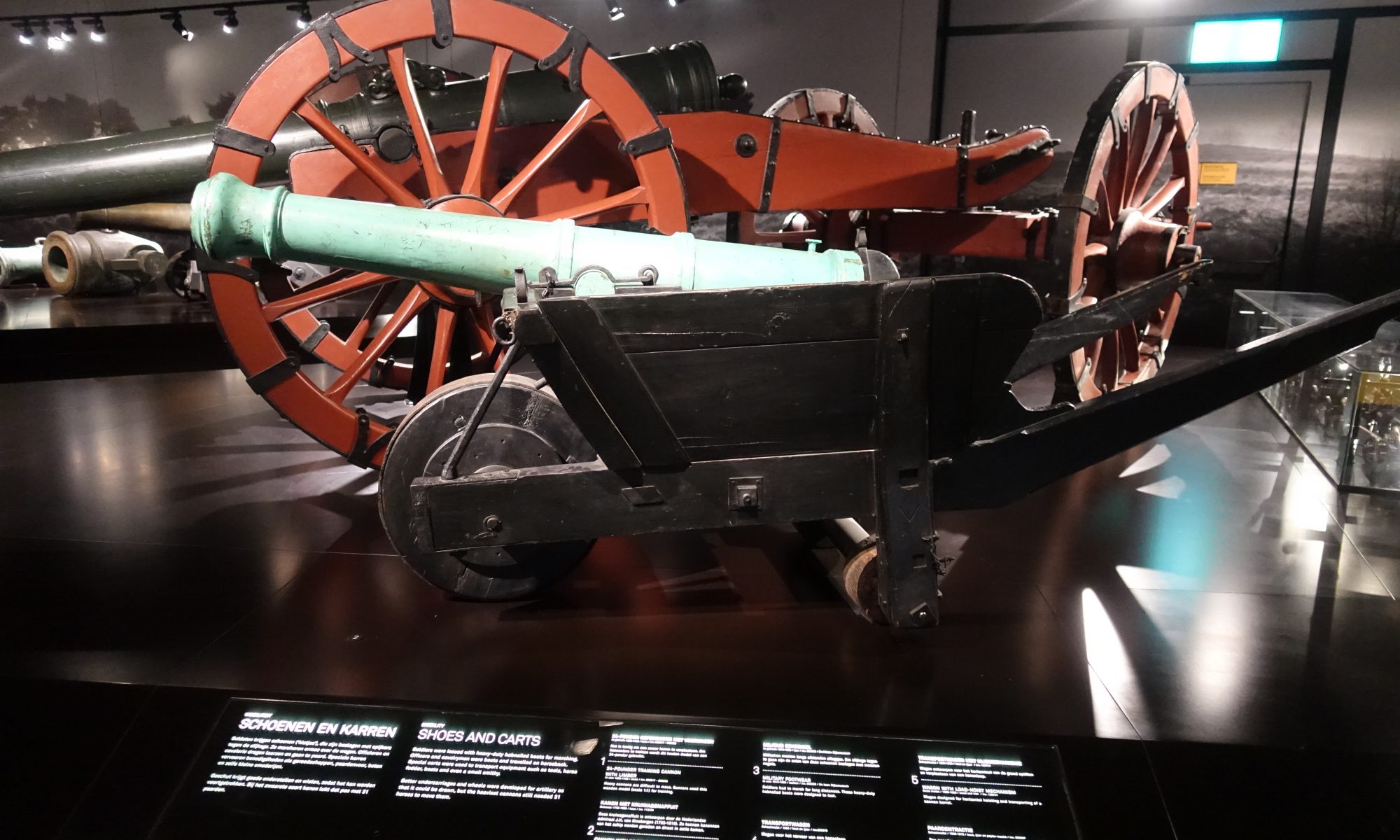
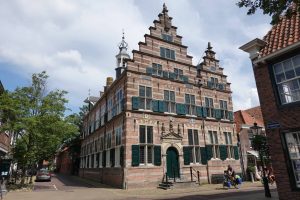 Our Walcheren Expedition: Preview took us to Naarden. We travelled to Walcheren via Amsterdam, which gave us the opportunity to spend a couple of days visiting some friends who live in Naarden. I’d not been there before, and given that most of this trip is about Me Me Me, I had already decided to let everybody else plan these few days. It says a lot about my friends that day one was spent exploring the seventeenth century star fortress and day two was spent at the
Our Walcheren Expedition: Preview took us to Naarden. We travelled to Walcheren via Amsterdam, which gave us the opportunity to spend a couple of days visiting some friends who live in Naarden. I’d not been there before, and given that most of this trip is about Me Me Me, I had already decided to let everybody else plan these few days. It says a lot about my friends that day one was spent exploring the seventeenth century star fortress and day two was spent at the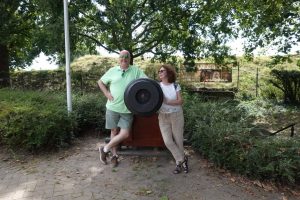 The town of
The town of 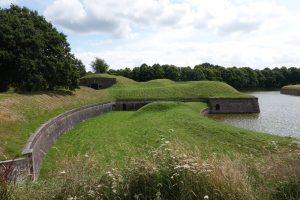 The current star shape of Naarden dates back to the 17th Century, when the fortifications were improved after the siege of 1673. Naarden was part of the New Dutch Waterline, a defensive line through the Netherlands which I’d never heard of before. I would love to do a tour of these forts, they look stunning, but that will have to be another visit.
The current star shape of Naarden dates back to the 17th Century, when the fortifications were improved after the siege of 1673. Naarden was part of the New Dutch Waterline, a defensive line through the Netherlands which I’d never heard of before. I would love to do a tour of these forts, they look stunning, but that will have to be another visit.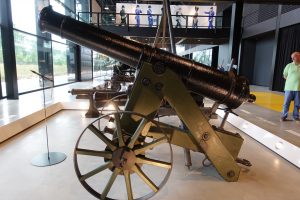 The National Military Museum is definitely a full day out. It is situated on the former air base at Soesterberg and apparently combines the collections of the former Military Aviation Museum in Soesterberg and Army Museum in Delft.
The National Military Museum is definitely a full day out. It is situated on the former air base at Soesterberg and apparently combines the collections of the former Military Aviation Museum in Soesterberg and Army Museum in Delft.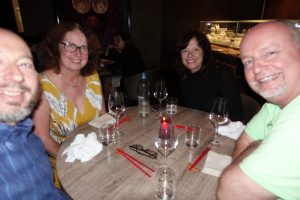 It wouldn’t feel right to end this first section of our trip without mentioning our evening out at the
It wouldn’t feel right to end this first section of our trip without mentioning our evening out at the 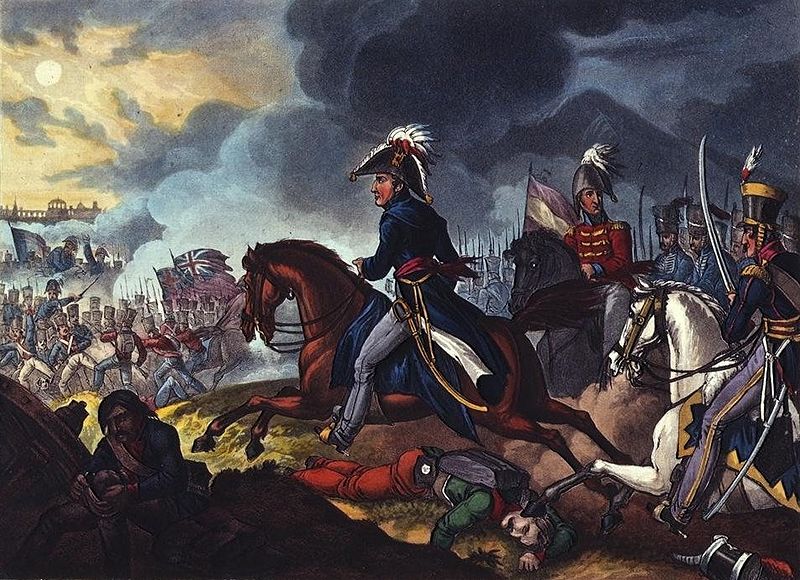
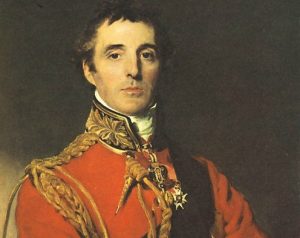 The Battle of Salamanca was fought on this day in 1812 across the rolling plains around the small Spanish village of Los Arapiles. In this excerpt from
The Battle of Salamanca was fought on this day in 1812 across the rolling plains around the small Spanish village of Los Arapiles. In this excerpt from  After a little more than a fortnight at Rueda, it was a relief to Paul to get his brigade moving. Night marches could be difficult, depending on the terrain, but most of his men were very experienced and followed each other through the darkness, relying on the voices of NCOs and officers to guide them. The clink of horses and the thudding of hooves followed the progress of the cavalry who were advancing with the light division. Paul rode up the long column to find General Charles Alten in conversation with his big German orderly. Peering through the darkness he recognised Paul and waved him forward.
After a little more than a fortnight at Rueda, it was a relief to Paul to get his brigade moving. Night marches could be difficult, depending on the terrain, but most of his men were very experienced and followed each other through the darkness, relying on the voices of NCOs and officers to guide them. The clink of horses and the thudding of hooves followed the progress of the cavalry who were advancing with the light division. Paul rode up the long column to find General Charles Alten in conversation with his big German orderly. Peering through the darkness he recognised Paul and waved him forward. We visited the battlefield during our tour of Portugal and Spain in 2017. The Salamanca battlefield site is immense; not in actual size since it probably isn’t the widest battlefield Wellington fought over, but in the sheer amount of information available. I was
We visited the battlefield during our tour of Portugal and Spain in 2017. The Salamanca battlefield site is immense; not in actual size since it probably isn’t the widest battlefield Wellington fought over, but in the sheer amount of information available. I was 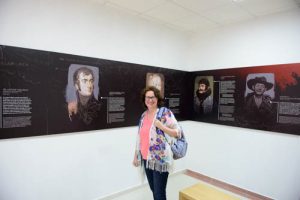 I was so glad we did. This is definitely the best small museum we visited. For one thing, everything is in both Spanish and English which wasmuch more useful than our desperate attempts to translate interpretation boards in other places. For another, it is amazingly detailed and accurate. From the advantages and disadvantages of the different infantry formations of line, square and column, to the best way to load a musket, somebody here had done their research and very well.
I was so glad we did. This is definitely the best small museum we visited. For one thing, everything is in both Spanish and English which wasmuch more useful than our desperate attempts to translate interpretation boards in other places. For another, it is amazingly detailed and accurate. From the advantages and disadvantages of the different infantry formations of line, square and column, to the best way to load a musket, somebody here had done their research and very well. 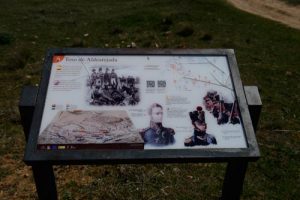 With the help of the museum, the interpretation boards, which are excellent, my trusty battlefield guide and a map, the Battle of Salamanca became suddenly very clear to me. Driving from board to board and then climbing hills and rocky outcrops to view the various vantage points of the battle it was very easy to visualise how Wellington was able to split the French line and send their army fleeing within a few hours.
With the help of the museum, the interpretation boards, which are excellent, my trusty battlefield guide and a map, the Battle of Salamanca became suddenly very clear to me. Driving from board to board and then climbing hills and rocky outcrops to view the various vantage points of the battle it was very easy to visualise how Wellington was able to split the French line and send their army fleeing within a few hours.
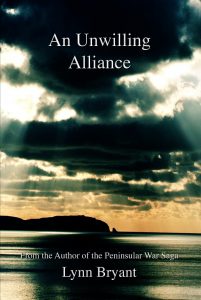
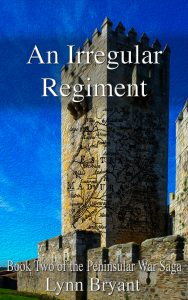
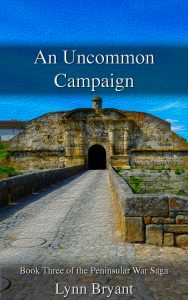

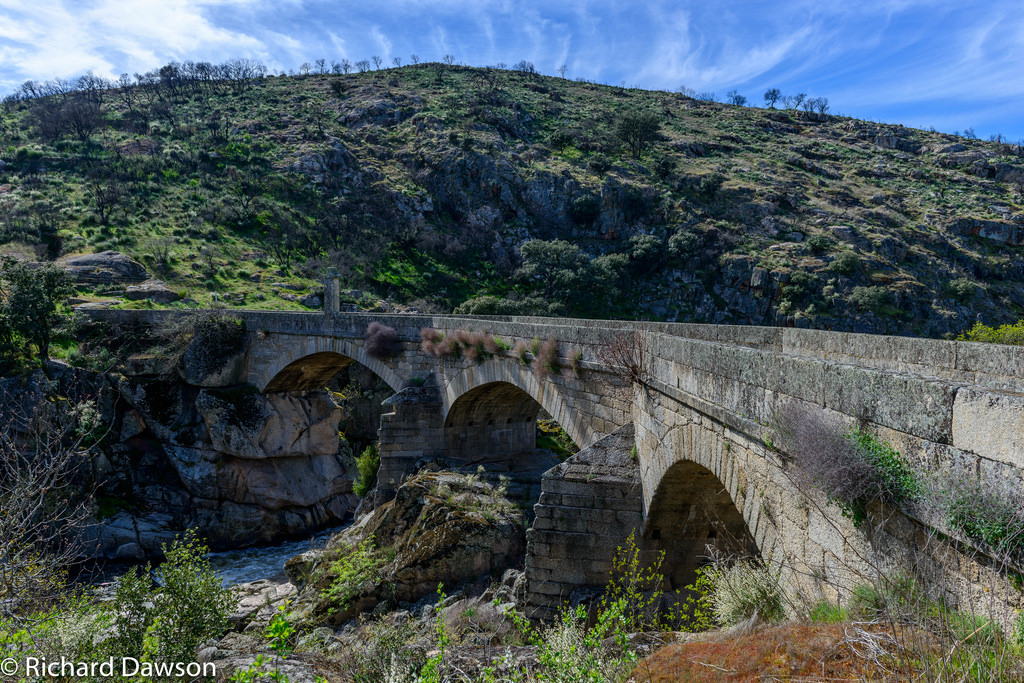
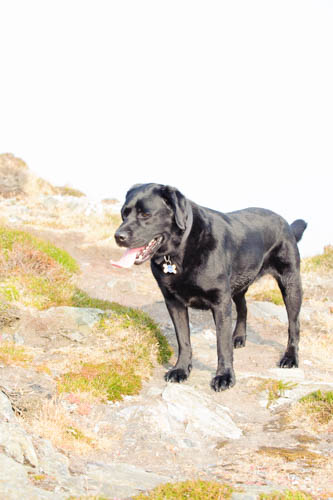
 Peel is on the west coast of the Isle of Man, a pretty little town, with the ruins of a magnificent castle, originally built by the Vikings, standing on St Patrick’s Isle. The castle was built in the eleventh century, originally of wood, and was added to over the centuries. The cathedral was also located on the island until it was abandoned during the eighteenth century. Peel Castle is now owned by
Peel is on the west coast of the Isle of Man, a pretty little town, with the ruins of a magnificent castle, originally built by the Vikings, standing on St Patrick’s Isle. The castle was built in the eleventh century, originally of wood, and was added to over the centuries. The cathedral was also located on the island until it was abandoned during the eighteenth century. Peel Castle is now owned by 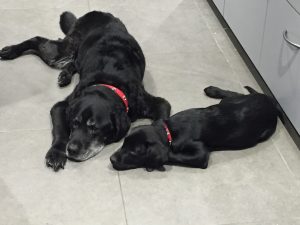 Moving to the island back in 2002, I had never heard of the Moddey Dhoo until my first visit to Peel Castle. When we acquired Toby, our huge black labrador, we were frequently greeted by strangers when we were walking him, comparing him to Peel’s most famous canine. With Toby gone now, we have Oscar, a younger version, to keep the old legend fresh in our minds.
Moving to the island back in 2002, I had never heard of the Moddey Dhoo until my first visit to Peel Castle. When we acquired Toby, our huge black labrador, we were frequently greeted by strangers when we were walking him, comparing him to Peel’s most famous canine. With Toby gone now, we have Oscar, a younger version, to keep the old legend fresh in our minds.
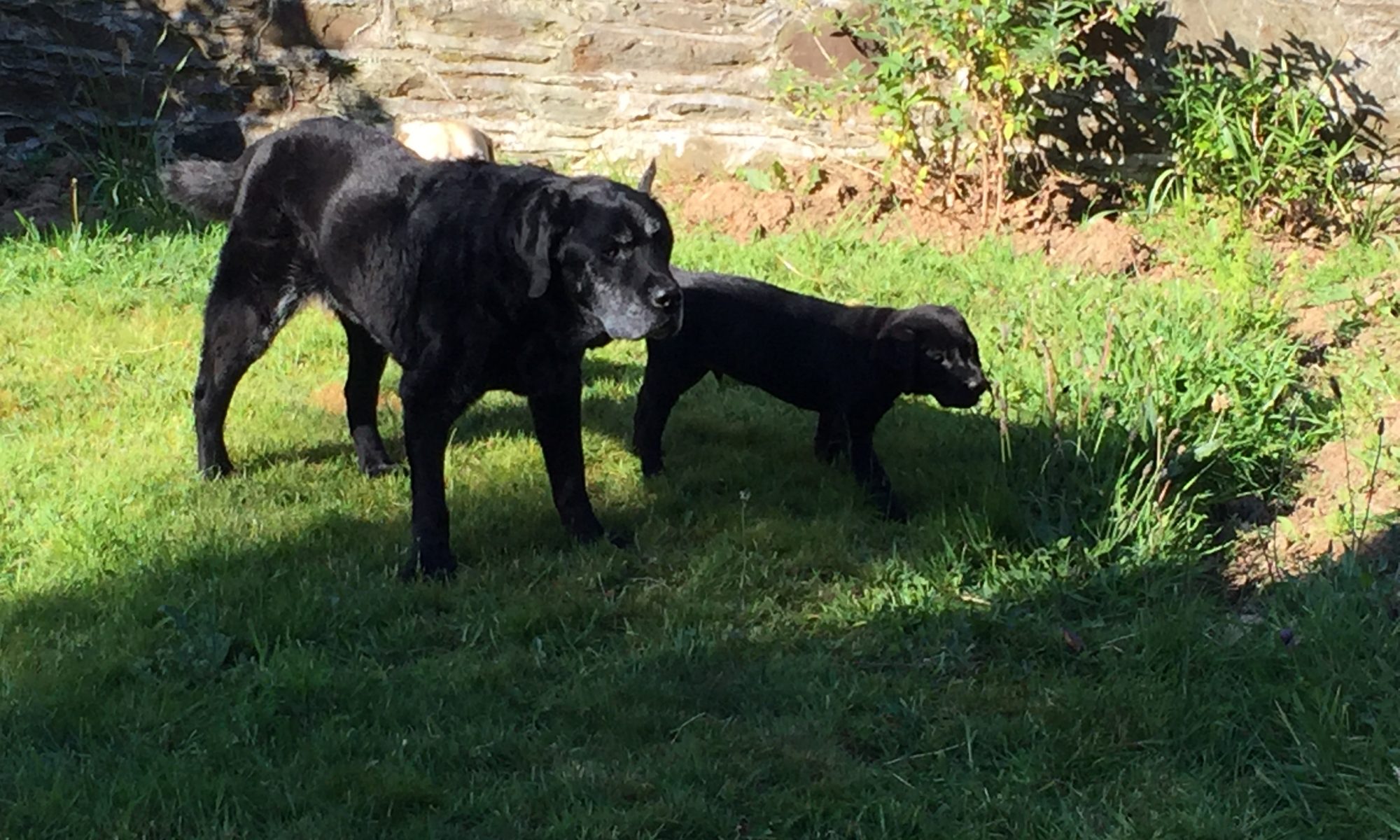
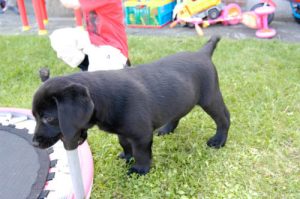 Toby was the result of a snap decision after spending some time with friends who had a young black labrador. It was a decision that changed our lives.
Toby was the result of a snap decision after spending some time with friends who had a young black labrador. It was a decision that changed our lives.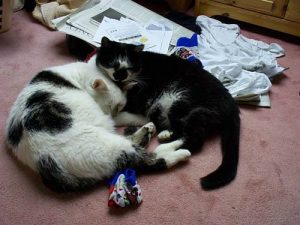 We had lost our beloved cats, Reggie and Ronnie, over a year earlier. Both lived to be more than twenty and we couldn’t imagine finding cats with their enormous personalities to replace them. We were living on the Isle of Man by then with two young children, both of whom had fallen in love with Tavey, our friends’ dog during our visit. On the way home, Richard said suddenly:
We had lost our beloved cats, Reggie and Ronnie, over a year earlier. Both lived to be more than twenty and we couldn’t imagine finding cats with their enormous personalities to replace them. We were living on the Isle of Man by then with two young children, both of whom had fallen in love with Tavey, our friends’ dog during our visit. On the way home, Richard said suddenly: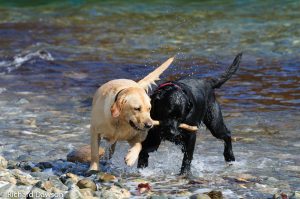
 Toby at two and a half, when we introduced Joey, the new puppy, patiently letting him jump all over him and then batting him halfway across the room when he got bored.
Toby at two and a half, when we introduced Joey, the new puppy, patiently letting him jump all over him and then batting him halfway across the room when he got bored.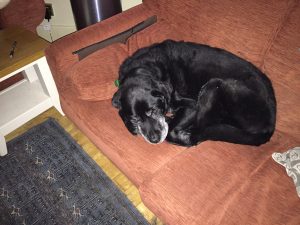 Toby getting older, his beard and eyebrows going grey, still handsome, very distinguished.
Toby getting older, his beard and eyebrows going grey, still handsome, very distinguished.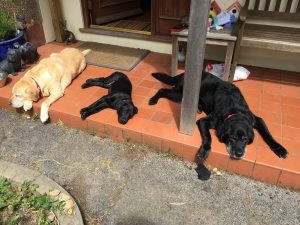
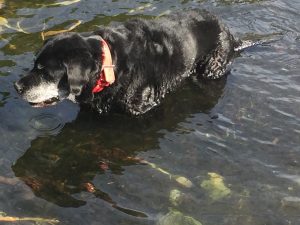 There was a day, a few weeks back, when we took the dogs to Groudle Beach. I’d not seen Toby go into the water properly for a long time but he clearly wanted to show Oscar how it was done. It brought tears to my eyes to see how happy he was, splashing about. He looked like a dog who was discovering some of his lost youth and seemed to be enjoying it.
There was a day, a few weeks back, when we took the dogs to Groudle Beach. I’d not seen Toby go into the water properly for a long time but he clearly wanted to show Oscar how it was done. It brought tears to my eyes to see how happy he was, splashing about. He looked like a dog who was discovering some of his lost youth and seemed to be enjoying it.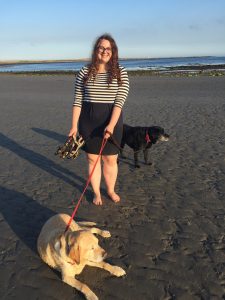 A week ago we took the three of them to Derbyhaven Beach in the evening. He was less keen to swim that day but he paddled, and sniffed the rocks and walked around on the sand looking so happy, his tail wagging, a big grin on his face.
A week ago we took the three of them to Derbyhaven Beach in the evening. He was less keen to swim that day but he paddled, and sniffed the rocks and walked around on the sand looking so happy, his tail wagging, a big grin on his face.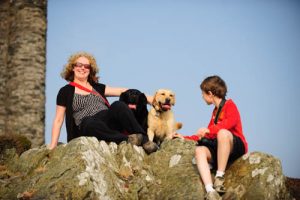 It’s only been a few days, and grief still catches all of us unawares. We all deal with it differently; the girls talk and cry a lot, the boys are quieter, sadder. Joey spent the first day wandering from room to room, knowing he was missing, which made me cry more. But we were so lucky to get Oscar, the perfect puppy, when we did. His company has settled Joey very quickly. It would have been much harder without him.
It’s only been a few days, and grief still catches all of us unawares. We all deal with it differently; the girls talk and cry a lot, the boys are quieter, sadder. Joey spent the first day wandering from room to room, knowing he was missing, which made me cry more. But we were so lucky to get Oscar, the perfect puppy, when we did. His company has settled Joey very quickly. It would have been much harder without him.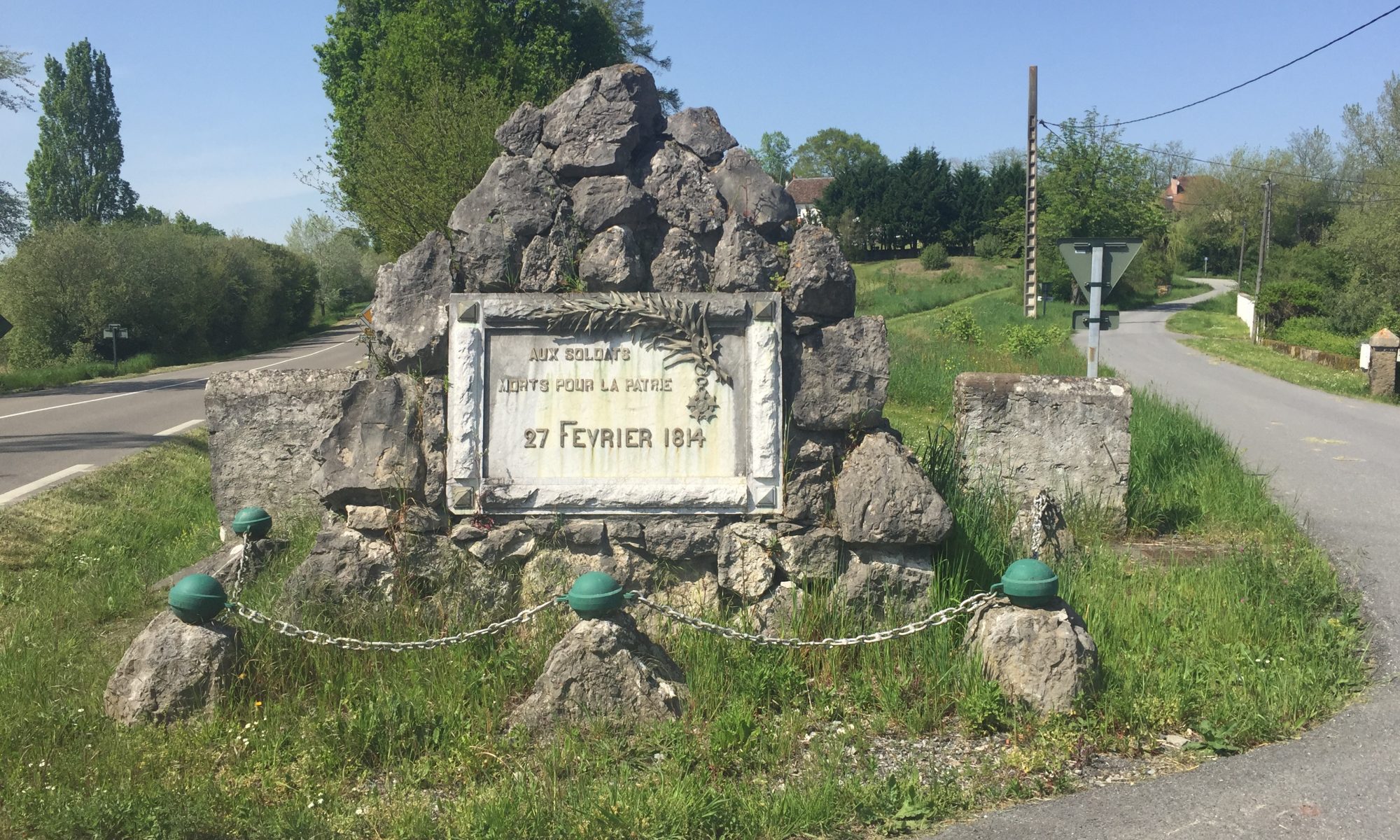
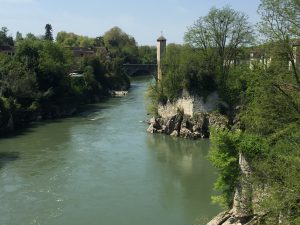 The Battle of Orthez took place on 27 February 1814. After the fierce fighting through the Pyrenees, storms and torrential rain prevented any action for two months.
The Battle of Orthez took place on 27 February 1814. After the fierce fighting through the Pyrenees, storms and torrential rain prevented any action for two months.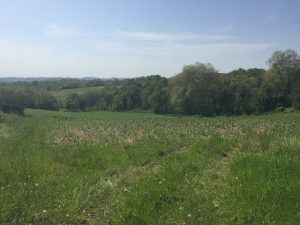 It was frosty but not frozen on the morning of 27 February, difficult for me to imagine yesterday, exploring the battlefield in soaring temperatures. At 8.30 the 4th division attacked Taupin at St Boes and quickly seized the church. Ross’s brigade swept into the village but were driven back by the battery on the Plassotte knoll. Cole brought up a KGL battery to duel with Taupin’s guns. This immediately became the target of the French batteries on the Plassotte and Luc knolls; two guns were hit and Captain Sympher was killed.
It was frosty but not frozen on the morning of 27 February, difficult for me to imagine yesterday, exploring the battlefield in soaring temperatures. At 8.30 the 4th division attacked Taupin at St Boes and quickly seized the church. Ross’s brigade swept into the village but were driven back by the battery on the Plassotte knoll. Cole brought up a KGL battery to duel with Taupin’s guns. This immediately became the target of the French batteries on the Plassotte and Luc knolls; two guns were hit and Captain Sympher was killed. Orthez is just over thirty miles to the east of Bayonne, a pretty little town on the river Gave de Pau. The original bridge, with its distinctive sentry tower in the centre, is still there and can be seen from the modern bridge. We drove through the town to view Wellington’s deployment area up past the church and then drove up towards Baights de Bearn to see the spurs where Picton’s men would have been deployed to the right of the road.
Orthez is just over thirty miles to the east of Bayonne, a pretty little town on the river Gave de Pau. The original bridge, with its distinctive sentry tower in the centre, is still there and can be seen from the modern bridge. We drove through the town to view Wellington’s deployment area up past the church and then drove up towards Baights de Bearn to see the spurs where Picton’s men would have been deployed to the right of the road.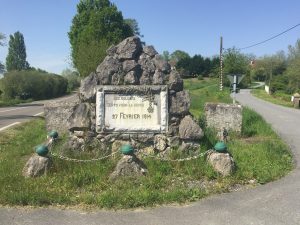 Turning right after St Boes we drove along the ridge held by Soult’s men. The 52nd would have climbed up the gulley to the right to appear between Taupin and Rouget’s division. It doesn’t look like a particularly easy climb and given the time of year it may well have been very boggy. There is a memorial to General Foy’s men on the left-hand side further along the road.
Turning right after St Boes we drove along the ridge held by Soult’s men. The 52nd would have climbed up the gulley to the right to appear between Taupin and Rouget’s division. It doesn’t look like a particularly easy climb and given the time of year it may well have been very boggy. There is a memorial to General Foy’s men on the left-hand side further along the road.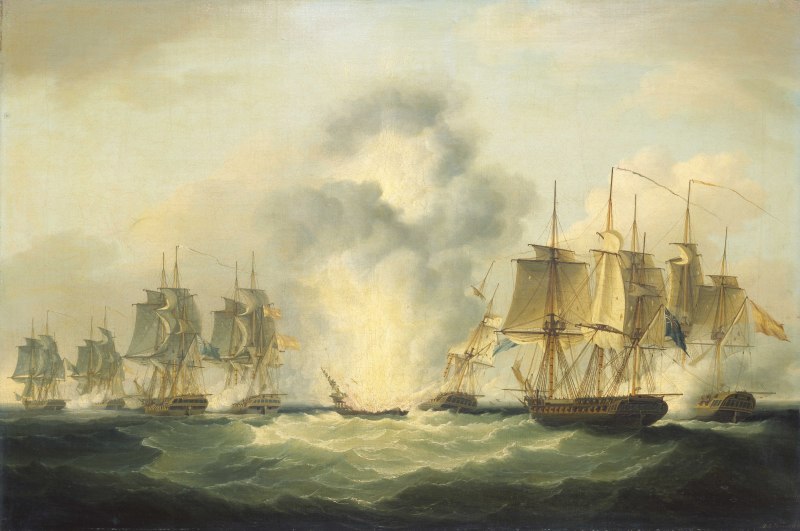
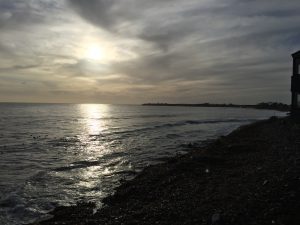 An Unwilling Alliance is the new book, due out in April 2018 and tells the story of Captain Hugh Kelly RN who returns to the Isle of Man after fifteen years away with a few months leave and a small fortune in prize money to find himself a sensible Manx wife.
An Unwilling Alliance is the new book, due out in April 2018 and tells the story of Captain Hugh Kelly RN who returns to the Isle of Man after fifteen years away with a few months leave and a small fortune in prize money to find himself a sensible Manx wife.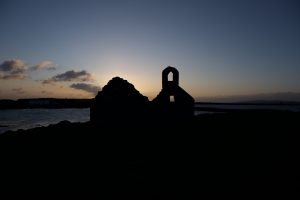 St Michael’s Isle was the northern most point of the Langness Peninsula. Roseen remembered her father telling her that it used to be detached at high tide, a true island, but the causeway had been built in the middle of the previous century to link it permanently. It was formed of rocky slate, it’s acidic soil limiting the plants that could grow there, and it was inhabited now mainly by sea birds of all kinds, wheeling overhead with their hoarse cries and occasionally swooping down into the choppy sea which crashed onto the rocky shores of the island. It was a place of peace and great beauty but it was not quiet.
St Michael’s Isle was the northern most point of the Langness Peninsula. Roseen remembered her father telling her that it used to be detached at high tide, a true island, but the causeway had been built in the middle of the previous century to link it permanently. It was formed of rocky slate, it’s acidic soil limiting the plants that could grow there, and it was inhabited now mainly by sea birds of all kinds, wheeling overhead with their hoarse cries and occasionally swooping down into the choppy sea which crashed onto the rocky shores of the island. It was a place of peace and great beauty but it was not quiet.